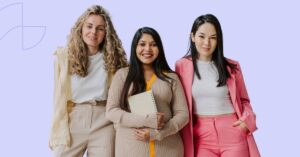How R&D Tax Credits Fuel the Future of Drone Technology

Unveil the impressive arc of drone technology advancement. Discover the challenges faced by the drone industry, trending advancements and the financial relief offered by R&D tax credits that aim to inspire innovation in unmanned aerial vehicles.
Research and development in drone technology is crucial for boosting innovation, refining operational capabilities, and catering to the diverse needs of industries. This proactive approach is key to propelling advancements that are necessary for the future of unmanned aerial vehicles (UAVs).
By investing in innovative advancement, stakeholders guarantee that drone technology stays at the forefront of innovation and meets the demands of a rapidly evolving landscape.
But while such investment in innovation can often add financial pressure to companies looking to make advancements, R&D tax credits have the ability to relieve the burden and fuel the future of drone technology.
Importance of Research and Development in Drone Technology
The significance of research and development in the field of drones drives innovation, enhances functionality, and propels the evolution of unmanned aerial technologies.
Funding is essential to support the exploration of new technologies, materials, and functionalities that can enhance the performance and versatility of drones. The British government’s dedication to excelling science and technology with the use of R&D tax credits therefore becomes a crux in domestic innovation, propelling the investment in drone technology through research and development.
Global Impact of Drone R&D
The advancement of drone research and development initiatives is shaping the global landscape of unmanned aerial technology. Drones are not only revolutionising traditional industries but also revealing new possibilities in various sectors. Some key aspects of the global impact of drone research and development include:
- Drone applications
- Market potential
- Unmanned aerial logistics
- Defence utilisation
- Agricultural drones
The continuous innovation in drone advancement is poised to have a profound impact on global economies, industries, and societies, driving advancements across various sectors and revealing new possibilities for the future.
Current Innovations in Drone Technology
In the domain of drone technology, continual advancements are shaping the landscape with innovative solutions and enhanced capabilities.
One of the significant advancements is in autonomous navigation , where drones are being equipped with sophisticated algorithms and sensors to navigate complex environments without human intervention, enabling them to perform tasks with greater precision and efficiency.
Furthermore, payload optimisation has become a focal point, with drones being designed to carry heavier loads while maintaining stability and manoeuvrability, expanding their range of applications.
Aerial mapping has also seen notable progress, with drones being utilised for high-resolution mapping and surveying tasks, providing valuable data for industries such as construction, agriculture, and environmental monitoring.
Additionally, advancements in battery efficiency have led to longer flight times and increased productivity for drones, reducing downtime for recharging and enhancing overall performance.
These innovations are driving the evolution of drone technology, opening up new possibilities and applications across various industries.
Challenges Faced in Advancing Drones
From both a public and industrial point of view, numerous obstacles hinder the progression of drone technology, impeding its full potential. Considering public privacy and safety concerns along with the technological obstacles, innovators in drone technology must take into account the significant moral dilemmas they may face as they seek to advance the impact of UAVs.
With drone propulsion, autonomous navigation, payload optimisation, aerial photography and swarm technology each posing significant technological challenges, the future of drone tech relies on research and development at the hands of experts and businesses alike.
Future Trends in Drone Research
Innovations in drone technology have revolutionised various industries, paving the way for enhanced efficiency, safety, and capabilities in aerial operations. These innovations have considerably improved the performance and functionality of drones across different applications, paving the way for these future trends in drone research. For example:
| Technologies | Description | Aims |
| Drone Materials | Lightweight and durable materials like carbon fibre and graphene are being utilised to enhance drone durability. | Increase in flight time and payload capacity. |
| Autonomous Navigation | AI-powered autonomous navigation systems allow drones to navigate complex environments without human intervention. | Improved precision in operations and obstacle avoidance. |
| Payload Optimisation | Advanced payload optimisation techniques enhance the efficiency of drones in carrying and delivering goods. | Increased productivity and operational flexibility. |
| Swarm Technology | Swarm technology enables coordination between multiple drones to perform tasks collaboratively. | Enhanced coverage area and faster completion of missions. |
| Battery Efficiency | Developments in battery technologies lead to longer flight times and improved energy efficiency for drones. | Extended operational duration and reduced downtime for recharging. |
These future trends in drone research aim to revolutionise the capabilities of drones, making them more versatile, intelligent, and efficient in various industries and applications. By investing in these areas, the drone industry is poised to reveal new potentials and redefine the possibilities of aerial technologies.
Regulatory Impacts on Drone Research and Development
The evolving landscape of drone technology research is greatly influenced by regulatory frameworks shaping the trajectory of research and development endeavours throughout the industry.
Airspace management is a key aspect influenced by regulatory impacts, as the safe integration of drones into the national airspace necessitates adherence to specific guidelines and protocols.
Privacy regulations also greatly impact drone research and development, particularly concerning data collection and storage practices. Ensuring that drones operate within the confines of established privacy laws is essential to prevent unauthorised data breaches.
Additionally, safety standards dictated by regulatory bodies are paramount in securing the safe operation of drones in various environments.
Adhering to these standards is critical to mitigate potential risks and guarantee the overall safety of drone operations.
Collaboration in Drone Technology Development
In the sector of drone technology development, collaboration plays a pivotal role in driving progress and achieving breakthroughs. Here are key aspects related to collaboration in drone tech development:
- Collaborative partnerships
- Knowledge sharing
- Industry alliances
- Research institutions
- Funding opportunities
In regards to funding opportunities, this is where R&D tax credit relief can play a major role. Considering the way in which these tax credits can encourage collaborative works that inspire innovative advancement, they have the ability to offer succinct benefits to partnerships working on drone technology.
Book a quick call back
How R&D Tax Credits Support Advancement in Drone Technology
Introduced in April 2000, R&D tax credits have inspired innovative advancements in science and technology by offering financial relief to businesses that propel their industries using research and development.
R&D Tax Credits Eligibility Criteria for Drone Technology
In order to qualify for R&D tax credit relief, you must be a business that is liable to pay corporate tax. Furthermore, your business must be engaging in what HMRC determines to be research and development – which is to say, your project must be undergoing a project that aims to overcome a scientific or technological uncertainty that cannot otherwise be solved by an expert in the field.
This means that businesses working on advancing drone technologies typically qualify based on their initial intent to overcome stubborn obstacles that often arise within the industry. Of course, this is provided that the research and development project isn’t designed to replicate existing technologies.
FAQ’s
Given the fact that HMRC’s definition of R&D is so vast, it is understandable that you may have more questions as to how your research and development project(s) can benefit from R&D tax credit relief. To clear a few things up, we took a moment to answer some of your most frequently asked questions.
Can R&D Claims Cover Costs for Drone Pilot Training?
Pilot certification costs for drone training programmes may be eligible for R&D relief. Exploring funding opportunities will help assess training programme effectiveness within industry standards. Skill development programmes align with R&D objectives, enhancing operational capabilities.
Are Drone Software Development Expenses Eligible for R&D Claims?
Expenses related to drone software development are eligible for R&D relief. Challenges in development necessitate funding opportunities. Strategic innovation aligns with market trends. Analysing costs, feasibility, and compliance guarantees successful claims for technological advancements in drone software.
How Can Businesses Ensure Compliance With Drone R&D Regulations?
Ensuring compliance with drone R&D regulations involves a thorough understanding of regulatory frameworks, conducting compliance audits to meet safety standards, safeguarding data privacy, and adhering to international regulations. Companies must prioritise adherence to these guidelines for successful operations.
What Are the Tax Implications of R&D Claims for Drone Technology?
Tax implications of R&D claims for drone technology involve potential tax credits, innovation incentives, eligibility criteria, and documentation requirements. Understanding industry benchmarks is essential for optimising claims and maximising benefits in compliance with regulations.
Is There a Limit on the Number of R&D Claims a Company Can Make for Drones?
When considering R&D claim limits, companies must adhere to eligibility criteria , ensuring each claim is substantiated with thorough documentation. Funding opportunities vary, with industry benchmarks guiding expected benefits from successful claims.
Final Thoughts
In summary, research and development initiatives in drone technology are essential for driving innovation, improving performance, and shaping the future of the industry.
Through investments in such innovation, organisations can push the boundaries of what is possible in drone technology, addressing challenges and revealing new possibilities for sustainable and secure advancements.
The impact of drone advancement extends globally, influencing regulations, industry trends, and technological breakthroughs that are reshaping the landscape of unmanned aerial vehicles.
How Can Alexander Clifford Help With R&D Tax Credit Claims?
As leading R&D tax credit consultants with extensive knowledge on R&D tax credit policy, specialists at Alexander Clifford have successfully submitted over 2,400 claims to HMRC. With a dedication to simplifying the claims process, our experts are on hand to manage your claim from start to finish. Get your start by filling in our contact form below.
Get a decision on your R&D eligibility from a qualified specialist in 15 minutes.







